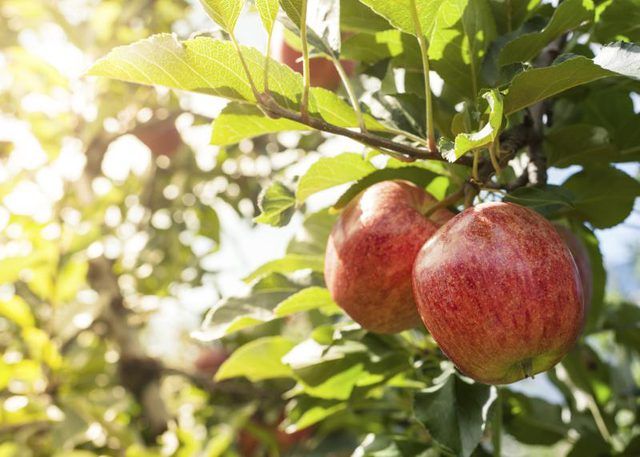Bulbs
Flower Basics
Flower Beds & Specialty Gardens
Flower Garden
Garden Furniture
Garden Gnomes
Garden Seeds
Garden Sheds
Garden Statues
Garden Tools & Supplies
Gardening Basics
Green & Organic
Groundcovers & Vines
Growing Annuals
Growing Basil
Growing Beans
Growing Berries
Growing Blueberries
Growing Cactus
Growing Corn
Growing Cotton
Growing Edibles
Growing Flowers
Growing Garlic
Growing Grapes
Growing Grass
Growing Herbs
Growing Jasmine
Growing Mint
Growing Mushrooms
Orchids
Growing Peanuts
Growing Perennials
Growing Plants
Growing Rosemary
Growing Roses
Growing Strawberries
Growing Sunflowers
Growing Thyme
Growing Tomatoes
Growing Tulips
Growing Vegetables
Herb Basics
Herb Garden
Indoor Growing
Landscaping Basics
Landscaping Patios
Landscaping Plants
Landscaping Shrubs
Landscaping Trees
Landscaping Walks & Pathways
Lawn Basics
Lawn Maintenance
Lawn Mowers
Lawn Ornaments
Lawn Planting
Lawn Tools
Outdoor Growing
Overall Landscape Planning
Pests, Weeds & Problems
Plant Basics
Rock Garden
Rose Garden
Shrubs
Soil
Specialty Gardens
Trees
Vegetable Garden
Yard Maintenance
Apple Tree Diseases
Apple Tree Diseases. A variety of diseases can plague an apple tree (Malus domestica). Some problems are purely cosmetic, while others can greatly reduce the health or productiveness of the tree. Apples grow in U.S. Department of Agriculture plant hardiness zones 3 through 9, depending on the variety. Identification of the most common or...

A variety of diseases can plague an apple tree (Malus domestica). Some problems are purely cosmetic, while others can greatly reduce the health or productiveness of the tree. Apples grow in U.S. Department of Agriculture plant hardiness zones 3 through 9, depending on the variety. Identification of the most common or devastating diseases helps you keep your tree healthy. Planting resistant varieties like the Liberty hybrid, hardy in zones 5 through 8, can also reduce many disease problems.
Blight Diseases
Fire blight, caused by the bacteria Erwinia amylovora, and nectria twig blight, caused by the fungus Nectria cinnabarina, produce similar symptoms but require different control methods. Fire blight kills shoots and branches, leaving behind a sticky reddish-brown sap that oozes from the infected wood. Twig blight also kills branches, primarily in early summer, but there is no sticky liquid and the branches or twigs are instead girdled by a canker at the point where dieback begins.
Control fire blight by cutting out infected branches 8 inches below the last point of infection. Disinfect the shears or pruning saw by wiping them down with a rag soaked in isopropyl alcohol after each cut. For repeat infections, spray the apple tree with a ready-to-use streptomycin spray, coating the tree thoroughly. Apply the spray at five- to seven-day intervals from the time the flowers begin to open until they drop off, as long as temperatures are above 65 degrees Fahrenheit. Twig blight doesn't require any control because the minor damage rarely affects the long-term health of the tree.
Fruit Problems
Flyspeck (Schizothyrium pomi, also known as Zygophiala jamaicensis) and sooty blotch (Gloeodes pomigena) form small black specks on developing fruit, while Brook's disease (Mycosphaerella pomi) creates sunken, irregular red or purple blotches. Bitter rot (Glomerella cingulata), primarily a problem in hot southern climates, forms light brown spots that enlarge as the infection progresses. Flyspeck, sooty blotch and Brook's disease are best controlled by proper pruning that provides good air circulation around developing fruits. For severe problems, you can control all four diseases with a Bordeaux spray fungicide mixture. Mix 3 1/3 tablespoons copper sulfate and 10 tablespoons hydrated lime (calcium hydroxide) with 1 gallon of water in a pump sprayer. Spray the Bordeaux onto the trees, coating them completely. Wait 14 days if a second application is necessary. The mixture is highly corrosive, so wash out spray equipment thoroughly after use, and wear gloves, eye protection and a face mask when mixing and applying the fungicide.
Black and White Rots
Small spots and blisters on twigs and leaves in early summer can indicate a white rot (Botryosphaeria dothidea) infection. Black rot (Botryosphaeria obtusa) looks similar, forming small purple lesions right after the flower petals begin to fall, with the lesions later enlarging and resembling a frog's eye. Cultural management provides the best control method for both diseases. Prune out infested branches and dead wood using disinfected tools. If cankers or fungal fruiting bodies are present on branches, remove the entire branch. Good air circulation and pruning sanitation usually provides sufficient control. If infections return to the same tree each year, you can use a preventive Bordeaux treatment at 14-day intervals beginning at flower drop and continuing through harvest.
Fungal Issues
Several diseases mainly affect the leaves, including fungal rust diseases, powdery mildew and apple scab (Venturia inaequalis). Rust lesions are yellow to orange in color, forming as spots over the leaf surface. Powdery mildew produces a white or gray powdery mold on leaf and twig surfaces, but can also spread to fruits. Scab begins as olive green lesions on the underside of the leaves, with the lesions gradually spreading and darkening as the disease progresses. Pruning out infected twigs helps minimize powdery mildew, while rust and scab are best controlled by planting resistant apple varieties.
For severe infections, control rust with a preventive Bordeaux treatment when the flower buds are pink. Powdery mildew prevention requires four treatments at 14-day intervals from the tight bud stage until the new twigs stop growing. Bordeaux treatment applied at 14-day intervals from flowering through fruiting can help prevent scab infections from occurring during wet weather. Most apple diseases are fungal, so a combination of good sanitation and a fungicide treatment like Bordeaux can usually solve the problem.